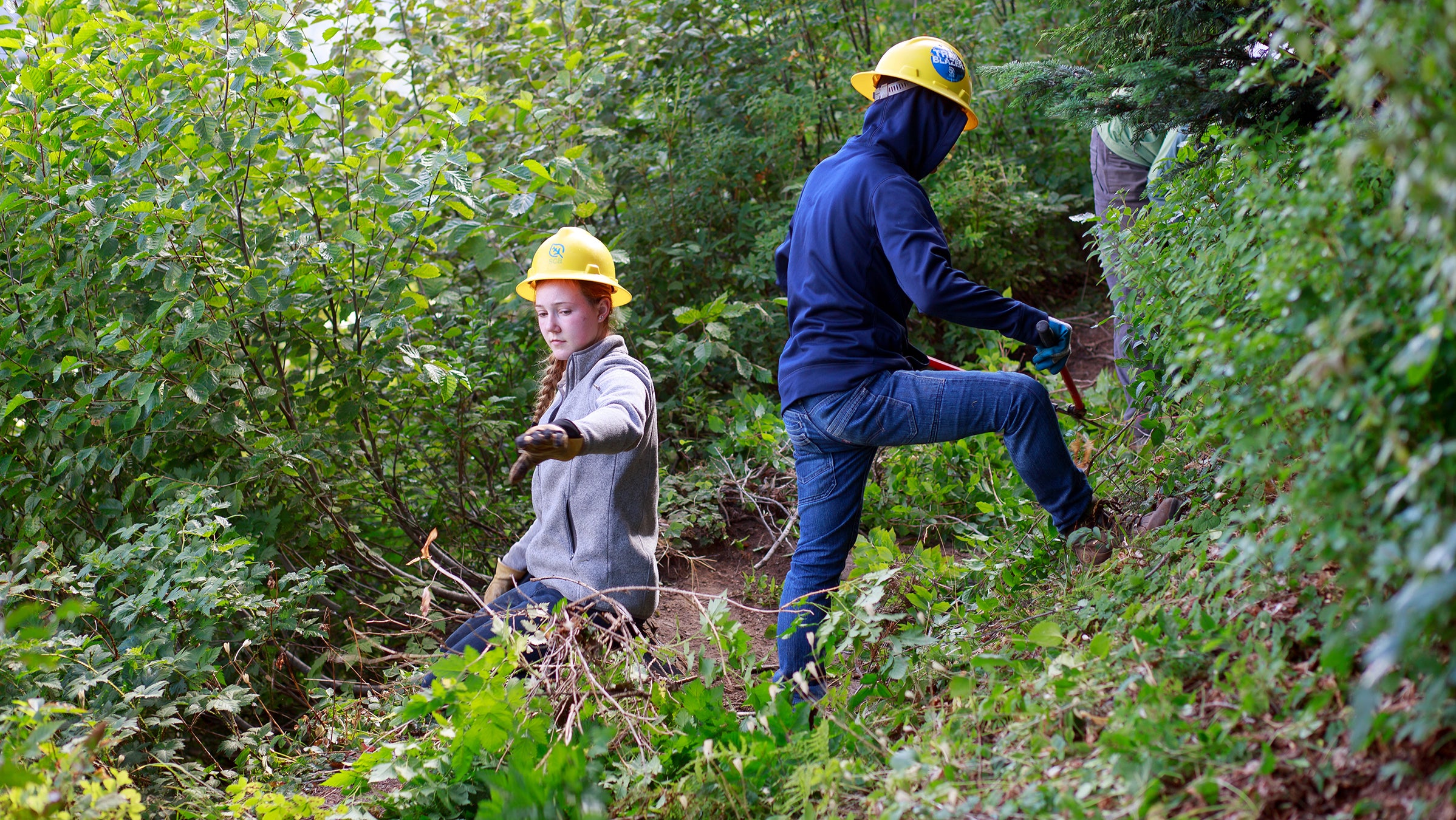Volunteers Keep Hiking Trails Passable. Here's Why It's Time for You to Chip In.

(Photo: Kevin Bacher)
From thru-hikers to weekend strollers, all backpackers have one thing in common: Every time they step on a trail, they’re benefitting from a volunteer’s hard work. Contrary to common belief, most land managers don’t have the budgets to fund paid trail crews every year. And since trails don’t build themselves and fallen trees don’t clear themselves, coming up with the resources to tackle these tasks takes a tremendous amount of volunteer effort.
Obtaining the required resources to manage public land is an issue every year; take, as evidence, the federal public lands maintenance backlog, which hit an all time high of $19 million in 2019.
Libby Wile knows more about the struggle than most. As senior director of programming for the American Hiking Society, Wile manages the organization’s Alternative Break program, which sends college students around the U.S. to fix up dilapidated trails, and Volunteer Vacations, a similar program aimed at the general public. “We work with hundreds of different land managers across the country, and we work with them on their specific trail project needs,” Wile says.
When Covid-19 drove hordes of people to the outdoors, that maintenance backlog grew as well—even as safety concerns forced AHS to cancel their Alternative Break and other volunteer programs.
“While we’re absolutely thrilled that hiking has seen such an increase and trail usage has seen an increase over the past year, it also increases the need for additional maintenance to continue to keep them safe for folks that might not have experience in the outdoors or on trail,” Wile says. And AHS doesn’t expect that interest to let up any time soon.
What would a world without trail volunteers look like? In brief, more difficult, and potentially dangerous. Features that are designed to prevent erosion to create sustainable trails would decay. Deadfall would make some trails impassible, especially in areas prone to storms. Many well-loved places would become completely inaccessible.
The good news: You can join a trail-building day, no equipment, training, or experience necessary. And non-profit organizations like the American Hiking Society are always striving to find more support.
“Trails don’t make themselves,” Wile says. “But once the trail is built, just from a year of usage as well as a year of growth, there’s innately a need for maintaining that trail so that it’s safe for folks to use. “
Want to help support your local trails? et involved with the American Hiking Society or reach out to your local recreation department.